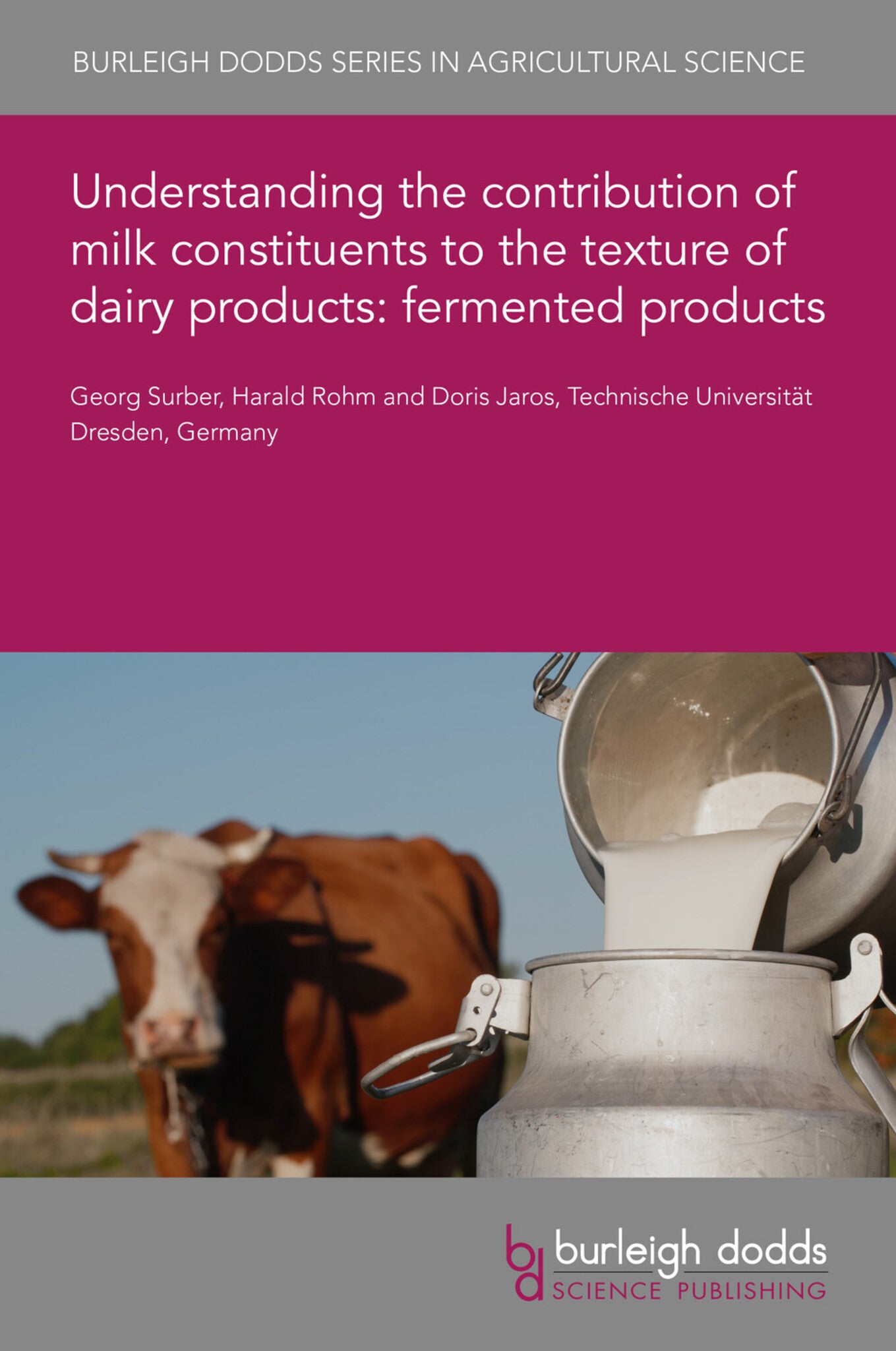We're sorry. An error has occurred
Please cancel or retry.
Understanding the contribution of milk constituents to the texture of dairy products: fermented products
Regular price
£25.00
Sale price
£25.00
Regular price
£25.00
Unit price
/
per
Sale
Sold out
Re-stocking soon
This chapter discusses the impact of the main milk components protein, fat and lactose on the texture of fermented milk. It is the three-dimensional protein network formed upon microbial acidificat...
Read More

Some error occured while loading the Quick View. Please close the Quick View and try reloading the page.
Couldn't load pickup availability
- Format:
-
14 March 2022

This chapter discusses the impact of the main milk components protein, fat and lactose on the texture of fermented milk. It is the three-dimensional protein network formed upon microbial acidification, which primarily dominates the properties of the final milk gel. Main factors of influence are the type and amount of protein used for fortification of the base milk, but also interactions between the different constituents. To make the picture complete manufacturing conditions and processing steps such as homogenisation, heating intensity and the application of mechanical stress affect texture and need to be considered. Finally, hydrocolloids or texturising starter cultures are important tools that contribute to the highly complex issue of texture. A short case study summarises the challenges of finding unambiguous data on the relationship between product texture and specific properties of extracellular polysaccharides.

Price: £25.00
Publisher: Burleigh Dodds Science Publishing
Imprint: Burleigh Dodds Science Publishing
Series: Burleigh Dodds Series in Agricultural Science
Publication Date:
14 March 2022
ISBN: 9781801464499
Format: eBook
BISACs:
TECHNOLOGY & ENGINEERING / Agriculture / Animal Husbandry, Dairy farming, TECHNOLOGY & ENGINEERING / Agriculture / Sustainable Agriculture, Sustainable agriculture, Animal husbandry

1 Introduction 2 Protein 3 Fat 4 Lactose 5 Additional factors 6 Case study: exploring heteropolysaccharide structure–function relations 7 Conclusion and future trends in research 8 Where to look for further information 9 Acknowledgement 10 References



